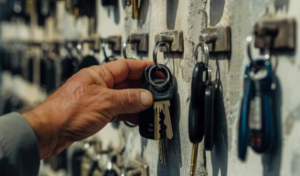Equestrians are looking for the latest horseback riding equipment and horse stall accessories available to ensure their horse is comfortable. If you are just starting, the amount of equipment and accessories available is quite staggering! New riders are often left to wander around a shop or scroll through pages of items online. Here’s a helpful horseback riding equipment list from Ride Every Stride for all riders that identify must-have items and what you need to know about each.
1. Stable Supplies
Stable supplies, including horse stall accessories, are the foundation of a well-maintained barn and help ensure that your horse remains in top condition. From feeding to grooming, every tool plays a vital role. Here are some key supplies that every rider should consider:
● Clippers
When it comes to buying clippers for your stable, there are many choices for jobs, both big and small. There are three types of horse clippers to choose from: trimmers, body clippers, and multi-purpose clippers. Trimmers handle light-duty areas such as your horse’s face, ears, and muzzle, and you can find them in both corded and battery-operated models. Body clippers are used for larger areas of the horse’s body and are heavier-duty, whereas multi-purpose clippers can be used for both small and large jobs, making them a versatile choice for any stable. A reliable set of clippers is essential for keeping your horse well-groomed, especially in warmer months when regular trims are needed.
● Scale
Feed your horse by weight, not by volume. This is standard advice given by professionals. A scale is significant, especially when your horse is having weight issues. You want to weigh the hay before feeding the horse to ensure they are getting the correct amount of nutrition. Overfeeding or underfeeding can lead to health problems, so it’s essential to be precise. Scales are also useful when measuring grains or supplements, making them a necessary tool in your feeding routine.
● Feeder
When it comes to finding a quality feeder for your horse, take some time to figure out what would best suit your horse’s needs. Many great options offer different slow feeders, wall-mounted feeders, and ground-based feeders. Slow feeders mimic natural grazing, enabling horses to eat more slowly, which improves digestion and reduces boredom. Wall-mounted feeders are convenient for saving space, while ground-based feeders are better for horses that prefer a more natural feeding position. Choosing the right feeder can make a significant difference in your horse’s health and happiness.
● Watering Supplies
Water is the most critical nutrient your horse needs, but it often gets overlooked! Providing your horses with fresh, clean water is one of the essential features to consider when planning your barn. Every horse must always have constant access to fresh, clean water. To prevent bacteria and grime from building up on the receptacle, causing the water to become stagnant, you should clean it out twice daily. There are two main methods of providing water in the stable: buckets or an automatic watering system. Buckets are simple and easy to use, but they require regular cleaning and refilling. Automatic watering systems, on the other hand, ensure that your horse always has access to fresh water without the need for constant manual refills.
● Hay Management
There are many options for getting hay into your horse—nets, feeders, managers, bags, automatic feeders, from the ground—what’s the best way to feed your horse hay? Hay nets or bags can help slow down your horse’s eating pace, which can improve digestion and reduce waste. Automatic feeders allow for scheduled feeding, giving you peace of mind that your horse is being fed consistently even when you’re not around. No matter which method you choose, the goal is to make sure your horse has constant access to high-quality hay in a way that supports their natural eating habits.
2. Horse Blankets
A vital horse riding equipment accessory is a blanket or rug intended to keep a horse warm or protected from wind or other elements. Blankets, along with other horse stall accessories, are essential for horses that are clipped or living in colder climates, where they need extra protection from the elements. They are tailored to fit around a horse’s body from chest to rump, with straps crossing underneath the belly to secure the blanket yet allowing the horse to move about freely.
Most designs feature one or two straps that buckle in front, while a few have a closed front that riders must slip over a horse’s head. Some designs also have small straps that loop lightly around the horse’s hind legs to prevent the blanket from slipping sideways.
Types of Blankets:
- Turnout Blankets: Used for outdoor protection in harsh weather conditions, including rain and wind.
- Stable Blankets: Ideal for indoor use to keep horses warm in the barn.
- Coolers: Used after exercise to help horses cool down gradually and prevent muscle strain.
What is the best way to store horse blankets not in daily use? You might combine horizontal stacking and vertical hanging in the tack room. Swing-arm blanket bars encourage air circulation for the thick, insulated blankets. The hanging four-bar blanket rack stacks four blankets, sheets, or coolers in layers folded over each bar. It takes less space but requires you to feed each folded blanket over rails close together. Proper storage will help extend the life of your blankets and keep them in good condition for longer.
3. Equestrian Whips
A crop, sometimes called a riding crop or hunting crop, is a short type of whip without a lash, used in horse riding, part of the family of tools known as horsewhips. Riders use horse whips or riding whips while riding, driving, or handling horses from the ground. There are many different kinds of crops, but all feature a handle, a long, semi-flexible shaft, and either a popper or lash at the end, depending on use. Crops are an essential tool for guiding the horse during riding, offering a way to reinforce commands. Always use them with care and precision to avoid causing discomfort to the horse.
4. Horse Equipment Storage
Keeping your horse equipment organized and easily accessible is crucial whether you’re managing a large stable or a small backyard barn. If your horses live at a boarding stable, you must keep all your equipment in a lockable trunk. Storing your horse equipment in this way will help you to keep track of your belongings and make sure you know where they are whenever you need them. A well-organized tack room can save you time and reduce stress, especially when you’re in a hurry.
Are you looking to add new horse stall accessories to your stable? Well, look no further. We, at Ride Every Stride, offer all types of stall curtains for horse shows, horse riding equipment, and other items that would be essential for your stable on our online store. Our wide selection of products meets the needs of riders at all levels, whether you’re just starting out or upgrading your current setup.
Please browse through our collection today and buy your much-needed piece of horse equipment now!







More Stories
Guide to Hiring an Airbnb Virtual Assistant
Understanding the Canada Work Permit Visa
Build a VR Shopping Experience with Low Budget, More Profit